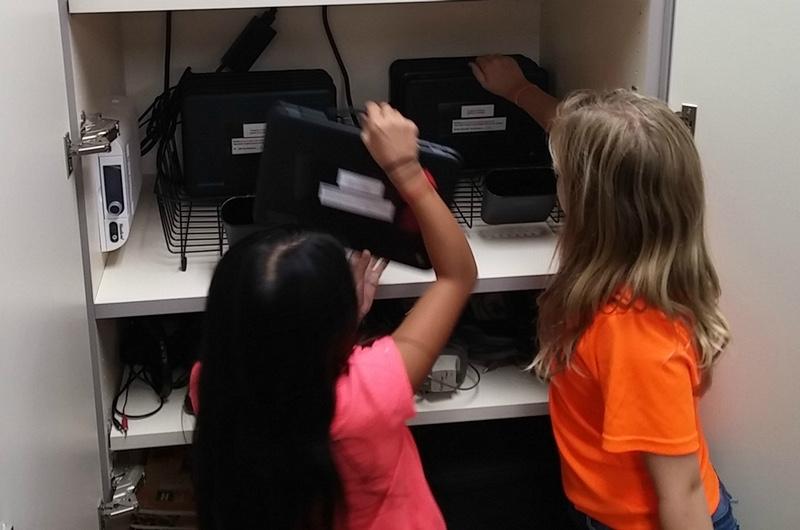
(Photo: Intel)
Almost
as soon as they were introduced in 2010, Apple’s iPad tablets became
huge hits in U.S. classrooms. By 2013, 40 percent of the digital devices
used in American schools were running iOS, while 30 percent were
running Windows and 16 percent were running Google’s Chrome OS.
But over the last couple of years, according to a recent report by Futuresource Consulting,
that situation has reversed. In 2014, sales of Chrome OS devices to
schools more than tripled, to over 3.5 million units, while iOS
shipments dropped to 2.3 million and Windows devices sold 2.2 million.
The trend continued in the first half of 2015, when Chromebooks
constituted nearly half of all devices shipped to classrooms; Apple was
responsible for just slightly over a fifth.
Why the shift? Price seems to be the principal cause, but it’s not the only factor at play.
Computers on a school budget
It is
hard to compete with Google on price: Devices running the Chrome OS can
cost as little as $200 each, and Google provides its Apps suite to the
education market for free.
Sure, there are some comparably priced Windows laptops, such as Acer’s Windows 10-based Cloudbooks, which can actually cost less than $200. But while students can get personal copies of Microsoft Office 365 for free, school systems are required to pay for it. (Those costs are often offset by grants or discounts.)

(Photo: Intel)
Apple
does not disclose its education pricing for iPads. But retail pricing
for the iPad Air is about twice that of Chrome OS or Windows devices.
Even the least expensive iPad Mini is about $70 more expensive than the
least expensive Chromebook or Windows machine.
Price
has become crucial because computing devices aren’t just discretionary
purchases for school districts. Those districts are increasingly
required to use such devices for standardized testing — but they aren’t
necessarily given enough funding to buy them. When they’re required to
buy computers but given little money to do so, price becomes the primary
concern — and Chromebooks are a great solution.
What about the apps?
Price isn’t the only factor driving Chromebooks into schools.
For
one thing, Chromebooks and Windows laptops are easier to repair than
Apple’s sealed iPads. But the biggest factor beyond price is probably
software. And here, despite Apple’s huge app ecosystem, Google (and, to a
lesser extent, Microsoft) may have the edge.

Apple’s iPad may have a huge ecosystem of apps — but they aren’t necessarily the apps teachers or students need. (Photo: Apple)
The
apps that matter most to schools are those designed for business —
especially word processors and presentation programs — such as those
found in the Google Apps and Microsoft Office 365 suites. As noted, both
of those suites are free to students, and they’re available to schools
at low or no cost. Both of those suites have great support for
collaboration, which allows students to work in teams, and enable
teachers to keep tabs on their students.
While
iPads can certainly work with both Google’s and Microsoft’s suites,
that support isn’t as seamless or robust as it is on Chrome or Windows
laptops, respectively.
Not without a fight
Microsoft,
at least, is not conceding the classroom to Google without a fight. The
company is pushing its Surface tablets for the education market by
providing grants, discounts, and expanded warranties. The company has
also launched an Innovative Expert program to help school systems expand the use of technology in the classroom.
Apple
has introduced the iPad Pro, which can be outfitted with an optional
keyboard and an optional stylus. But in today’s education market, an
iPad that costs four times as much as a Chromebook or Windows notebook —
even before you add in the cost of those optional input devices — is at
a disadvantage. For school districts struggling to buy $200 laptops,
the latest iPads seem to be unlikely buys.
The
bottom line is that, because of their comparatively low acquisition and
operating costs, Google’s Chrome OS devices are gaining ground,
followed by Microsoft. Apple, it seems, may have priced itself out of
the game.

